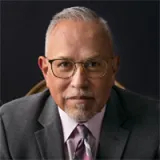English Learners and the Science of Reading

The National Center for Education Statistics (NCES) is the primary statistical agency of the U.S. Department of Education. It is one of 13 governmental agencies whose activities are predominantly focused on collecting and analyzing information for statistical purposes. In its latest Report (2023) of The Condition of Education, which is published every spring, the Center reported that as of fall 2020, there were 5 million English learners in schools across the country, accounting for 10.3 percent of the total student population. These numbers represent drops from 2019 when the center reported 5.1 million English learners or 10.4 percent of the total student population. NCES attributes this decline to the COVID pandemic of 2020 that brought the world to a screeching halt. I’ll anxiously be waiting for the next The Condition of Education report to see how the country bounced back in 2021.
As I thought of these numbers, I began to reflect on my career as an educator, going all the way back to my early days as a bilingual teacher with the Dallas Independent School District, when the country identified slightly more than 2 million English learners, or 5.1 percent of the total student population. During the span of 30 years, the number of English learners has more than doubled. I predict in less than eight years we will easily reach 6 million students learning English as a second language.
One of my biggest concerns is we, as educators, may not be adequately equipped to teach more than 5 million English learners. My level of anxiety reached new heights when the National Council on Teacher Quality (2023) recently published a startling statistic: 71 percent of Educator Preparation Programs reviewed1 dedicate fewer than two instructional hours to supporting English language learners, and 88 percent of those same programs offer no practice opportunities for teaching English language learners.
What? How can these students receive the education they need to succeed in this country? Are we being realistic? How can any student achieve their potential if teachers are not adequately prepared?
The more I thought about those numbers and the reality that looms ahead because of them, the more I realized that more understanding and awareness is required, along with actionable strategies that can help teachers—and therefore students. I reached out to my colleague, Dr. Elsa Cárdenas-Hagan, to discuss those questions above and the many facets of equitable education for this large portion of American students and what we, as educators, must do to help them achieve literacy success. “For students who are learning English as this additional language, it is very important for them to not only be strong in their home language, but also to be strong in that second or third language, because that is going to support literacy,” Dr. Cárdenas -Hagan said.
Isn’t that the truth! Dr. Cárdenas -Hagan and I had a wonderfully inspiring conversation on this topic as part of Voyager Sopris Learning’s EDVIEW360 podcast series. You can listen to our talk, here. We would love your input after you listen to the podcast and hear your thoughts about this critically important topic.
